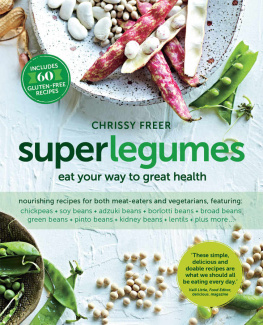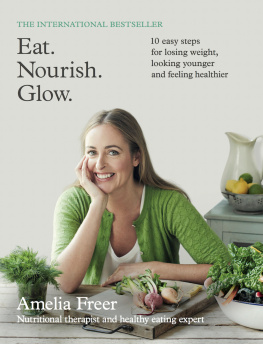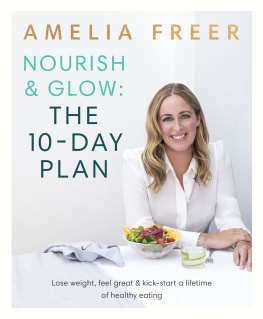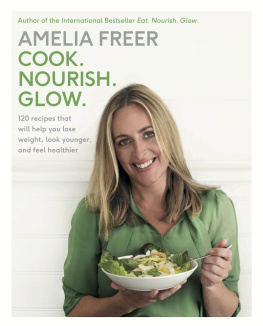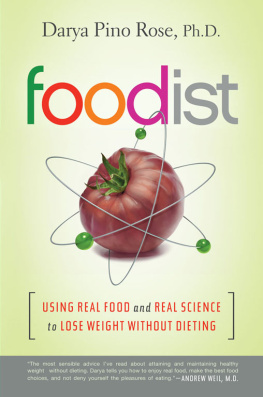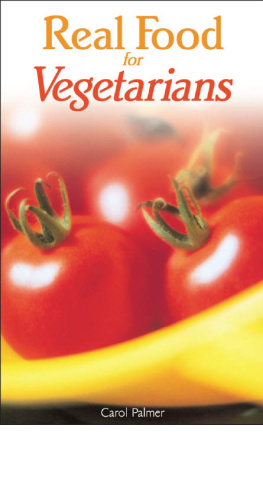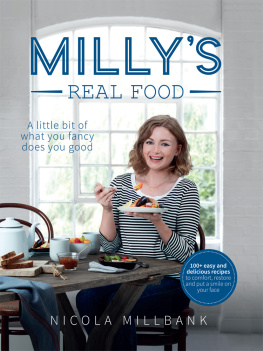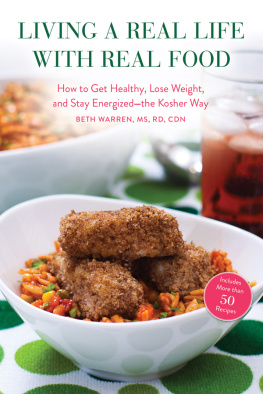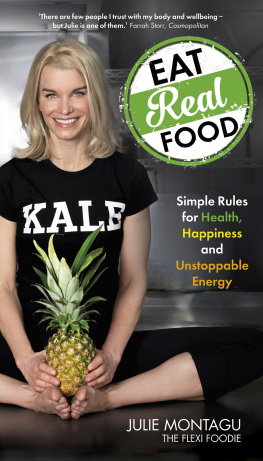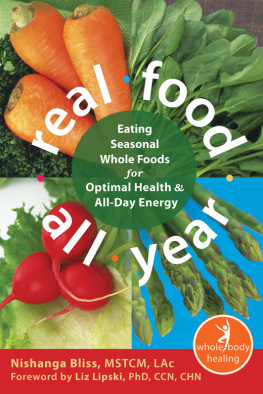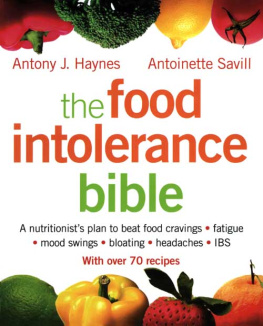Chrissy Freer is a nutritionist and food writer who has developed a signature style of delicious recipes with a holistic health focus. She has published two books with Murdoch Books, supergrains and superlegumes, and writes for a range of magazines and websites. Her recipes use whole, unprocessed foods to provide balanced nutrition and include low-GI, gluten-free and dairy-free options.
Chrissy lives in the beautiful Byron Bay region with her daughter, Harriet, and loves using the areas abundant local produce in her recipe development and cooking.
Whatever happened to eating real food?
In a world of fasts and fads, whirlwind diets and mealtime anxiety, isnt it time we took back the joy of eating real, whole, delicious food and enjoyed the good health, energy and glowing vitality that can go with that?
We only need to look at the increasing incidence of diabetes, food intolerances, allergies and digestive irritations and disorders to see that whatever it is were doing to our food, its not agreeing with us.
The idea that reduced-fat or diet food is healthier for us is gradually being thrown out as simply not true. In reality, its often highly processed, with sugars, thickeners and stabilisers added to replace the fat, create some flavour and give it the ability to sit on a shelf for six months without turning bad.
In Real Delicious, nutritionist, food writer and mother, Chrissy Freer, will show you how quick, easy,satisfying and invigorating it is to cook and eat real food. These are simply delicious recipes to share with family and friends for your whole life. Eat real, eat well and love it!
CONTENTS
MORE CHOICE, LESS WELLBEING?
Once upon a time, choosing what to eat was easy: our ancestors hungrily devoured whatever they could find, forage, hunt or grow. But times have changed and most of us now have the luxury of living with an abundance of food. This immense choice brings its own challenges.
Whether its the result of persuasive advertising, the huge variety of products on the supermarket shelves, or the constant, ever-changing and ever-contradictory flow of dietary advice on the internet and in magazines, choosing what to eat for good health and enjoyment has never felt so complicated. Even as a nutritionist I sometimes find the choice overwhelming. Navigating the vast amounts of information and mass of choices that is the food industry in the twenty-first century can be a pretty tricky business.
SO, WHY DO WE EAT?
Our bodies need energy to function, our brains need energy to keep us alive, and we get this energy from food. Everything we eat can be broken down into two basic categories: macronutrients and micronutrients.
Macronutrients are the main nutrient groups: protein, carbohydrate and fat. Its these that provide us with the energy required for growth and living. An easy way to remember is that macro means large and we need these nutrients in large quantities.
Micronutrients are our vitamins and minerals. They dont provide us with energy (kilojoules), but they are essential for good health, for growth and for bodily functions and processes. Micro means small and we only need these in smaller amounts, but that doesnt mean theyre not vitally important. (Remember learning about vitamin C and scurvy at school?)
PROTEINS: THE BUILDING BLOCKS
Proteins are made up of many building blocks called amino acids, which can then be classified as essential (they must be provided through diet) or non essential (they can be made by the human body). Protein plays an important role in the human body, being essential for growth and repair.
There are 20 amino acids in total, with nine of them being essential. The term complete protein refers to a protein that contains all nine essential amino acids, such as the protein in meat, dairy products or soy.
However, incomplete sources of protein (such as a grain and a legume) can be combined to form a complete protein. Then they are known as complementary proteins. And these dont need to be combined in the same meal; eating them over the course of a day is fine. This is especially important for people who arent eating animal protein but are following a vegetarian or vegan diet.
CARBOHYDRATES: SIMPLE, OR NOT SO SIMPLE?
Carbohydrates can be divided into simple sugars (glucose, fructose, galactose, maltose, sucrose and lactose) and complex carbohydrates (starch and fibre). Glucose provides half the energy the brain uses daily and is, therefore, an essential carbohydrate.
When we eat carbohydrates, some of the glucose is used for immediate energy, while the remainder gets converted into glycogen and stored in our muscles. These are reserves of energy that the body can use if food is scarce (something many of us rarely experience in the modern Western world). Good sources of carbohydrate include grains, fruit (fructose), vegetables, legumes and even milk (lactose).
The glycaemic index (GI) is a measure of the speed it takes individual carbohydrate foods to hit the bloodstream. The lower the GI of a food, the slower it releases glucose, the steadier and more sustained the energy release into the body. At the other end of the scale, foods with a high GI release glucose quickly and cause sudden spikes in blood sugar levels. Following a low GI diet is essential in the management of diabetes.
HEY, FATTY
Fats often get a bad rap, but in moderation they are essential for our health. Dietary fats and oils (triglycerides) fall into two broad categories: saturated and unsaturated fats. The fats found in food always contain a combination of both saturated and unsaturated fatty acids, but in differing ratios.
Unsaturated fats can be further classified as monounsaturated or polyunsaturated, and there are two types of polyunsaturated fats: omega-3 and omega-6 fatty acids. Mono and polyunsaturated fats are liquid at room temperature (olive oil and grapeseed oil, for example), while saturated fats are generally solid at room temperature (butter, lard, coconut oil and the fat on meat).
FOOD FOR ADDED LIFE
It has been proved over and over in nutritional and medical studies that the single most important thing we can do to improve our overall nutrition is to eat a diet rich in whole foods. And that shouldnt be difficult!
Think fresh fruit, veggies, nuts, seeds, eggs, whole grains and fresh meat. Whole foods are foods that are as close to their natural state as possible. They are unprocessed and unrefined, or have undergone only minimal processing, and dont include additives or artificial ingredients. This is where that popular mantra dont eat any food your grandparents wouldnt recognise can come in handy as a checkpoint.
But why are they so good? It seems logical that if a food is still in its whole state, it contains the full array of nutrients (macro and micro) that nature gave it. For example, compare brown rice to white rice. Brown rice consists of the whole grain of rice only the inedible outer husk has been removed and the grain retains its nutrient-rich bran and germ. The rice is essentially unaltered. White rice, in contrast, has been both milled and polished to remove the bran layer and the germ, along with all the nutrients they contain. Brown rice is a whole food; white rice is a processed food.


